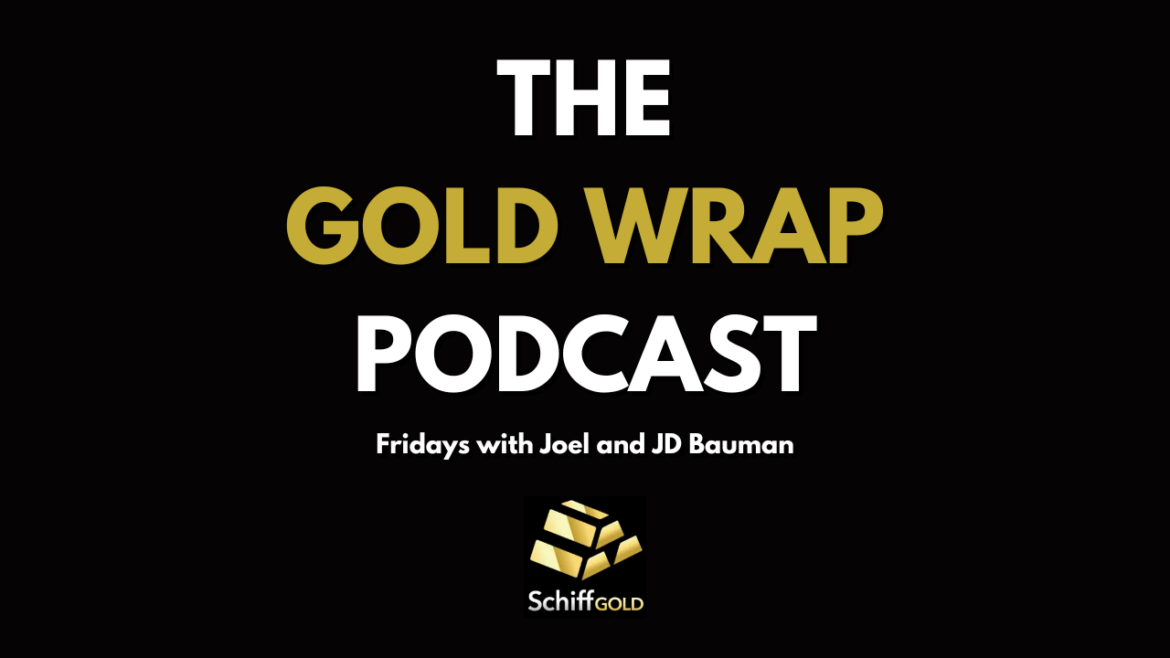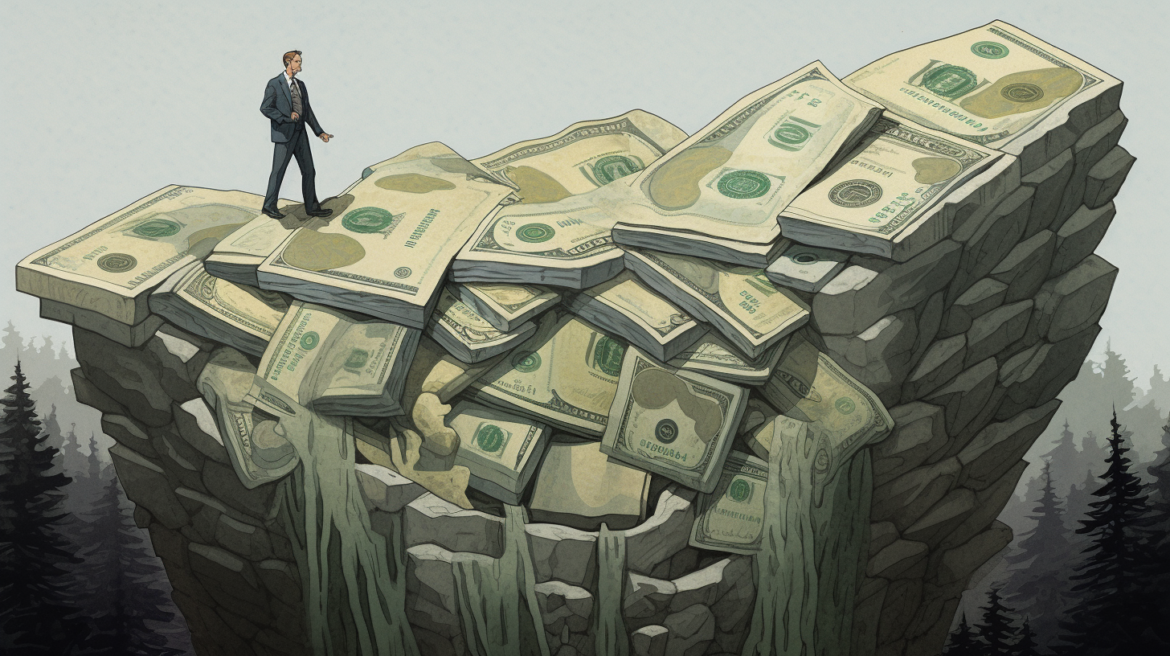Gold has all the potential to go unprecedentedly high. But silver will be gold on
Site:
Precious metals news
 Interest Rate Outlook: Fed Plans Cautious Cuts After Inflation Assessment
Interest Rate Outlook: Fed Plans Cautious Cuts After Inflation AssessmentFeb 9, 2024 - 11:08:05 PST
The Federal Reserve has been increasing the federal funds rate to fight inflation, with 11 hikes from March 2022 to July 2023. Although prices are beginning to decrease, the Fed is waiting for more solid data before making any rate cuts. In its first 2024 meeting, the Federal Open Market Committee (FOMC) kept interest rates stable at 5.25 to 5.5%, marking the highest rate in over 20 years. There are seven more meetings scheduled for the year where rate cuts could be considered, with the next one on March 19 and 20. This shows that while rate cuts are anticipated, they won't happen until at least spring, as the Fed carefully watches inflation trends.
 Government Says, Inflation in December Was Even Lower Than First Reported
Government Says, Inflation in December Was Even Lower Than First ReportedFeb 9, 2024 - 10:21:30 PST
The U.S. government has announced that inflation in December was even lower than initially reported. The revised data shows that prices for a wide range of goods and services rose by 0.2% for the month, which is lower than the first estimate of 0.3%. This slight adjustment indicates that inflation was cooling down as 2023 began, potentially giving the Federal Reserve more room to reduce interest rates later in the year.
In this week's Friday Gold Wrap Podcast, JD and Joel discuss why gold is down this week, Powell's comments on 60 Minutes about the debt, and some Valentine's Day thoughts inspired by Austrian economist Carl Menger.
Nvidia has seen its value skyrocket, reaching a point where it's now equivalent to the entire value of the Chinese stock market. Over the past year, Nvidia's value has jumped by 228%, contrasting sharply with the 26% drop in the Hang Seng Index, which tracks the Hong Kong stock market, primarily fueled by their dominance in the A.I. industry.
 Oil Prices Spike as US Inflation Concerns Ease and Geopolitical Tensions Rise
Oil Prices Spike as US Inflation Concerns Ease and Geopolitical Tensions RiseFeb 9, 2024 - 08:57:35 PST
Oil prices surged as recent US data revisions indicated that inflation pressures are decreasing, sparking optimism that the Federal Reserve may lower interest rates later this year. The price of West Texas Intermediate oil climbed above $77 a barrel, driven by a mix of factors including the S&P 500 hitting new highs, increased geopolitical risks, and technical trading patterns. Additionally, shipping companies have raised alarms about worsening security in the Red Sea. The combination of these factors, along with tighter fuel markets as shown by rising refining margins, has contributed to oil's price rise.
 Gold Price Forecast: CommerzBank Says Gold Unlikely To Leave its Trading Range
Gold Price Forecast: CommerzBank Says Gold Unlikely To Leave its Trading RangeFeb 9, 2024 - 08:32:44 PST
Analysts at Commerzbank are not optimistic about a sudden shift towards rapid interest rate cuts, even if the inflation data comes in lower than expected. They believe that without a significant surprise in the inflation figures, gold is unlikely to break out of its current trading range, which lies between slightly over $2,050 and $2,000.
Going to the SuperBowl has never been cheap. But this year, as the Kansas City Chiefs face off against the San Francisco 49ers in Las Vegas for Super Bowl 58, the ticket prices have hit the roof, making it the priciest Super Bowl ever. Tickets are being sold for between $5,300 and $107,000 on Stubhub, with the average cost around $9,500. Compared to last year's game, ticket prices have shot up by 93%, and over the last decade, they've increased by 300%.
Turkey continued its trend of investing heavily in gold in January, purchasing 23 tonnes and maintaining its position as the world's leading gold buyer among central banks for that period. This recent purchase has brought Turkey's gold reserves to an all-time high of 565 tonnes. Globally, central banks have increased their gold reserves by a net total of 31 tonnes in January, marking a 16% rise from December's figures. Following Turkey, the People’s Bank of China and the National Bank of Kazakhstan were significant buyers, adding 15 tonnes and 4 tonnes to their gold reserves, respectively.
Speaking to the Investing News Network, Joe Cavatoni, market strategist at the World Gold Council, reminded investors that it's important to hold the yellow metal during tough times.
U.S. weekly jobless claims have dipped, showcasing the labor market's robustness even as the tech sector announces significant layoffs. Last week saw a decrease of 9,000 in jobless claims, settling at 218,000, against a backdrop of anticipated layoffs predominantly in the technology industry. This development suggests not only the absence of widespread job losses but also a strong economic growth momentum carrying into early 2024, potentially impacting the Federal Reserve's interest rate decisions.
Global creditors engaged with major ratings agencies such as Moody's, Fitch, and S&P Global Ratings to discuss the impact of debt relief provided to some of the world's poorest nations. The focus was on how these actions affect credit ratings, particularly in light of the Debt Service Suspension Initiative (DSSI) which has been crucial since the COVID-19 pandemic. Countries seeking relief faced increased borrowing costs due to downgrade warnings, highlighting the need for a balanced approach to sovereign debt distress.
Companies around the world are starting to buy back their own shares at a fast pace as 2024 begins, thanks to strong earnings that were better than many expected. After being cautious with their money in 2023 due to high borrowing costs, businesses are now expected to increase their share buybacks this year. In the United States alone, companies have announced plans to buy back $105 billion of their own shares just in the first week of February, a record start to the year. This is seen as a big support for stock markets, which are already hitting new highs, with the S&P 500 Index reaching new records nine times this year.
Jerome Powell's 60 Minutes portrayal of the national debt crisis as a distant concern starkly contrasts with the urgent reality we face. Peter Schiff doesn't mince words in his most recent podcast when he highlights the immediate threat:
 MAJOR DISCONNECT BETWEEN STOCK MARKET & SILVER PRICE: Silver Mining Margins Non-Existent At Market Highs
MAJOR DISCONNECT BETWEEN STOCK MARKET & SILVER PRICE: Silver Mining Margins Non-Existent At Market HighsFebruary 9, 2024
There's a Major Disconnect today between the Broader Stock Markets and the silver price. The primary silver miners struggle to produce silver with non-existent profit margins while the S&P 500 hit a new high today. Something has to give, and the better fundamental value is in silver...
 T+1 Transition Troubles: How the Fast Pace of US Stocks Could Disrupt Currency Trades
T+1 Transition Troubles: How the Fast Pace of US Stocks Could Disrupt Currency TradesFeb 8, 2024 - 13:02:18 PST
The United States is making a big change to how fast stock trades happen, cutting down the time to just one day for a transaction to be completed, known as T+1. This change, happening in less than four months, is causing a lot of work for CLS, the biggest company in the world for settling foreign-exchange trades. Since the currency market usually takes two days to settle trades, this new faster stock trade time could lead to problems, especially for international investors who need to get their hands on dollars quickly to buy US stocks.
Feb 8, 2024 - 12:51:44 PST
In the last quarter 2023, credit card debt in the U.S. hit a new high, reaching $1.13 trillion. This marks a $50 billion increase, or 4.6%, from the third quarter, as reported by the New York Federal Reserve Bank's quarterly analysis on household debt and credit. Not only did credit card balances spike, but overall household debt also went up by 1.2%, totaling $17.5 trillion.
 China's Price Plunge: Fastest Consumer Cost Drop in Over a Decade Signals Economic Woes
China's Price Plunge: Fastest Consumer Cost Drop in Over a Decade Signals Economic WoesFeb 8, 2024 - 11:23:09 PST
China's economy is facing challenges as consumer prices have fallen at the quickest rate in nearly 14 years, signaling a tough road ahead for its economic recovery. In January, the consumer price index, which measures the average change in prices paid by consumers for goods and services, decreased by 0.8% compared to a year earlier, marking the most significant drop since September 2009. This decline in consumer prices, more than what economists had anticipated, suggests China is under deflationary pressure, meaning prices are decreasing across a wide array of goods and services.
One year since the collapse of Silicon Valley Bank and Signature Bank, the bank that acquired Signature Bank's assets is showing signs of collapsing.
In Egypt, the soaring prices and a declining currency have shifted a long-standing tradition. Traditionally, Egyptian women receive a gold jewelry set during their engagement, known as "shabka." However, due to economic difficulties, with inflation over 30% and the currency losing half its value against the dollar, many are now receiving silver instead.
Goldman Sachs is sticking to its positive outlook on gold, predicting it will hit $2,175 in the next year. This confidence is driven by ongoing demand and global political tensions.The market's hesitance, influenced by the Federal Reserve's tough stance and the postponement of interest rate reductions till June 2024, hasn't dampened Goldman Sachs' optimism. They believe that solid demand for physical gold and geopolitical concerns will keep gold's price from falling too much, keeping their $2,175 target firmly in view.







